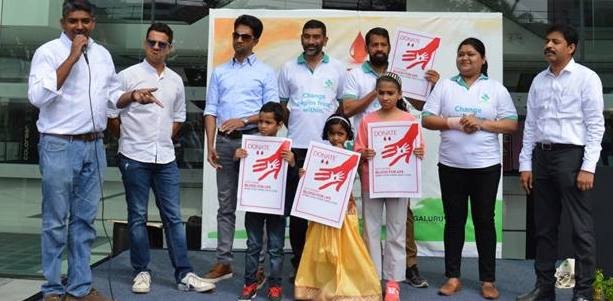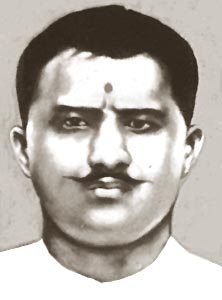Celebrating India's 75th Independence Day
India attained independence on this day in the year 1947 after years of struggle.
India attained independence on this day in the year 1947 after years of struggle.

A single can create million smiles!!
The incident shook the very roots of British imperialism. It created a great upheaval in British India. The retribution was severe when more than 40 revolutionaries were arrested from all over India. As per official record of the British Government, a criminal conspiracy case was filed against 28 active members of HRA by the Special Magistrate Ainuddin after a long time. 21 persons were presented before Session Court of Special Judge A. Hamilton on 21 May 1926. Abbas Salim Khan, Banvari Lal Bhargava, Gyan Chattarji and Mohd.
After arrest of both the senior organizer of HRA total responsibility to run the party had come on the shoulders of Bismil. The District Organizers were demanding money. They were writing very sensitive letters to him: "Pandit Ji! We are dying with hunger, please do something." As a result he was feeling himself guilty for their pitiable condition.
In February 1920, when all the prisoners of Mainpuri Conspiracy Case were released under government proclamation, Bismil returned to his native place Shahjahanpur and met the District Authorities. They allowed Bismil to live peacefully after taking an affidavit of undertaking from him declaring therein not to participate in any such revolutionary activity.
From 1919 to 1920 Bismil remained underground. He also went to his paternal village Barbai in Morena district of M.P. state to take some money from his mother. While living underground he wrote several books: Man Ki Lahar - a collection of poems, Bolshevikon Ki Kartoot - a revolutionary novel, Yogik Sadhan - a booklet of yoga defining how to create a firm resolve in one's mind, and Catherine or Swadhinta Ki Devi - a consigned autobiography of Catherine, the grandmother of the Russian Revolution.
Bismil formed a revolutionary organization in the name of Matrivedi (Altar of Motherland) and contacted Pt. Genda Lal Dixit who was a school teacher at Auraiya. Reference of Dixit was given to him by his mentor Som Dev. Till then, Bismil had collected some weapons also. Som Dev knew that Bismil could be more offensive in his mission if a matured and experienced person supported him. Genda Lal had contacts with some powerful revolutionaries of the state.
Ram Prasad Bismil was born on 11 June 1897 at Shahjahanpur, a historical city of Uttar Pradesh (U.P.) in a religious Hindu family of Murlidhar and Moolmati. His father Murlidhar decided to educate Ram through Urdu medium and he was admitted in Islamia School of Shahjahanpur. As he grew up, he associated with bad students and read romantic poetry books and cheap novels that undermined his academic work. When he failed twice in 7th standard of Urdu, he was admitted to an English school of the city.
 Ram Prasad Bismil participated in the Mainpuri Conspiracy of 1918, and the Kakori train robbery of 1925. Apart from being a freedom fighter, he was also a patriotic poet. Ram, Agyat and Bismil were known as his pen names which he used in Urdu and Hindi poetry. But, he became popular with the last name "Bismil" only.
Ram Prasad Bismil participated in the Mainpuri Conspiracy of 1918, and the Kakori train robbery of 1925. Apart from being a freedom fighter, he was also a patriotic poet. Ram, Agyat and Bismil were known as his pen names which he used in Urdu and Hindi poetry. But, he became popular with the last name "Bismil" only.
 Chandrashekhar Azad was a great Indian freedom fighter. His fierce patriotism and courage inspired others of his generation to enter freedom struggle. Chandrasekhar Azad was the mentor Bhagat Singh, and along with Bhagat Singh, he is considered as one of the greatest revolutionaries who dawned in the soil of the nation.
Chandrashekhar Azad was a great Indian freedom fighter. His fierce patriotism and courage inspired others of his generation to enter freedom struggle. Chandrasekhar Azad was the mentor Bhagat Singh, and along with Bhagat Singh, he is considered as one of the greatest revolutionaries who dawned in the soil of the nation.